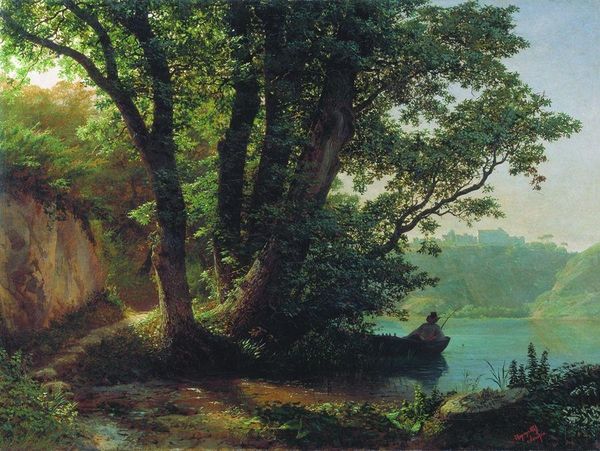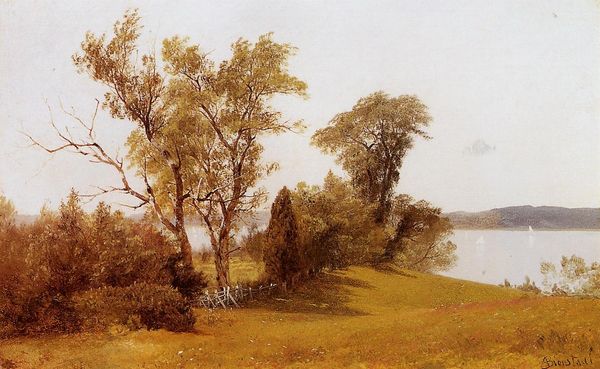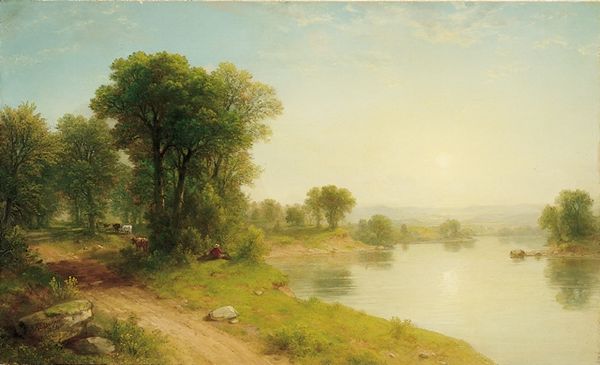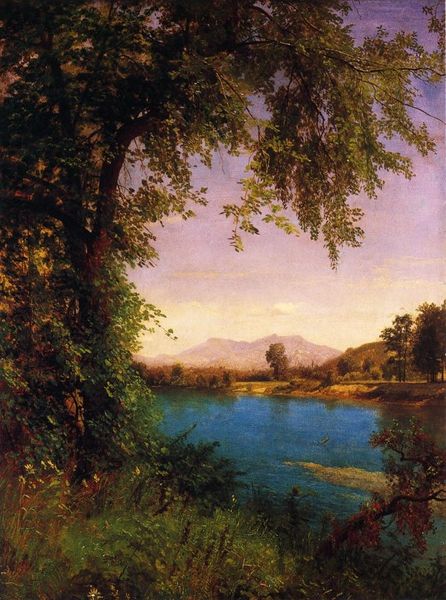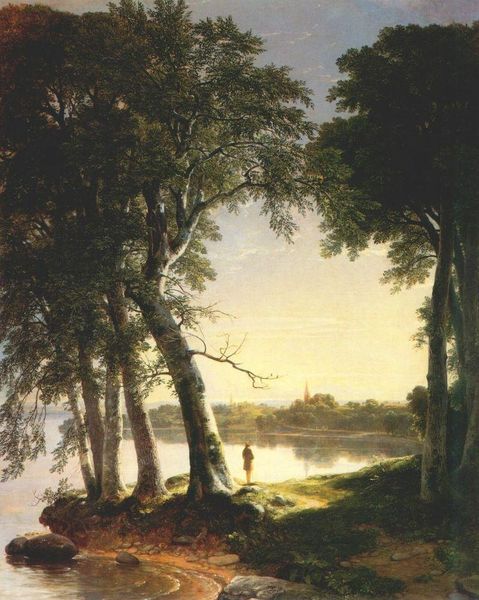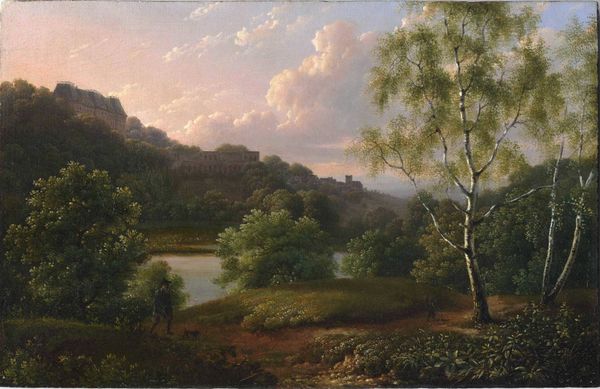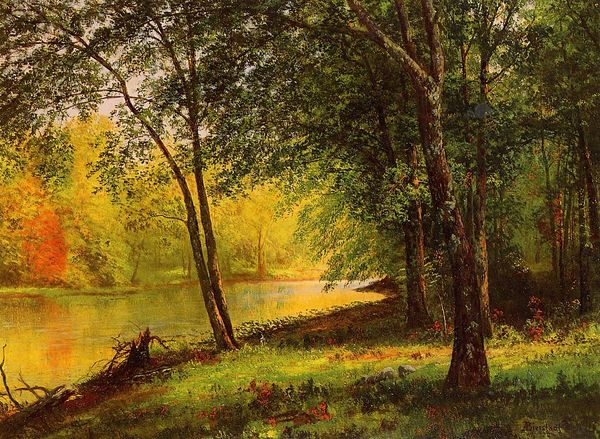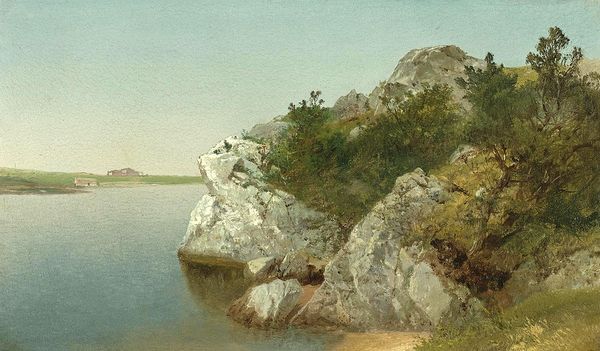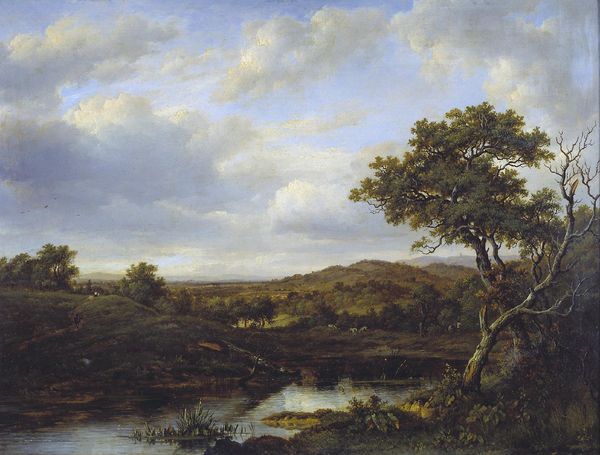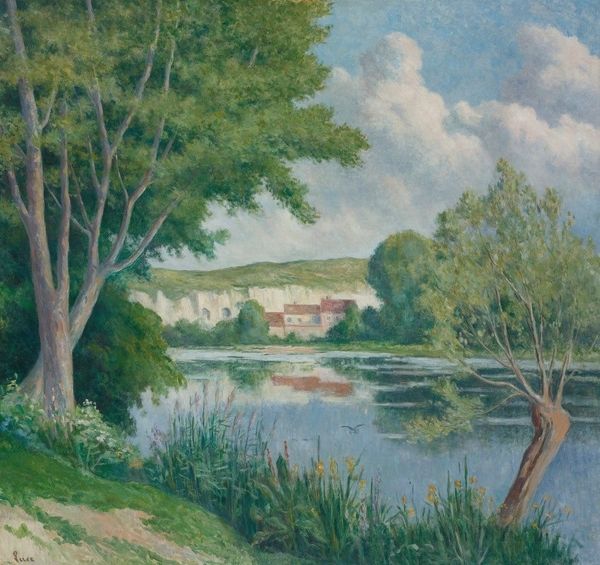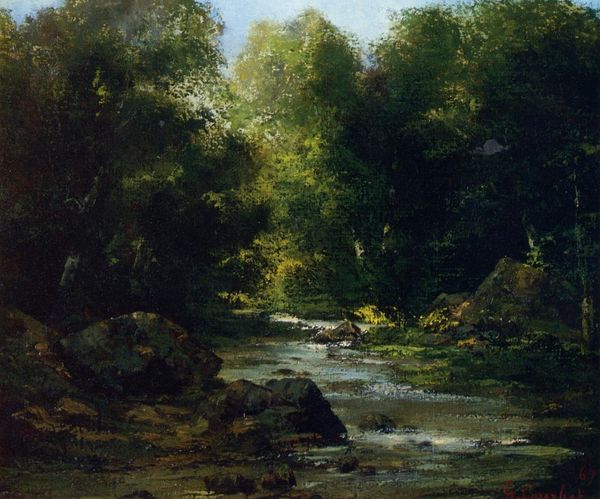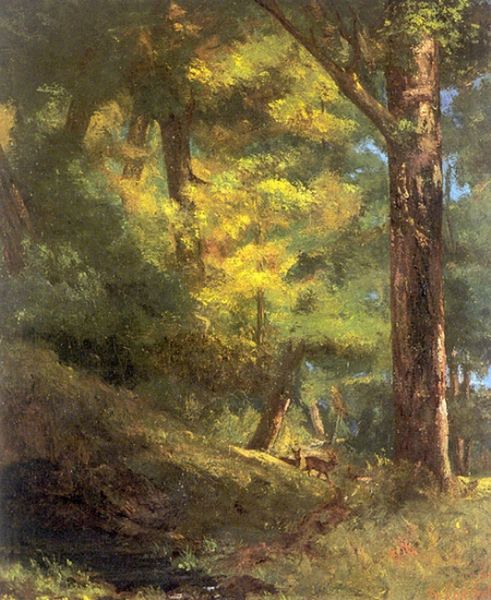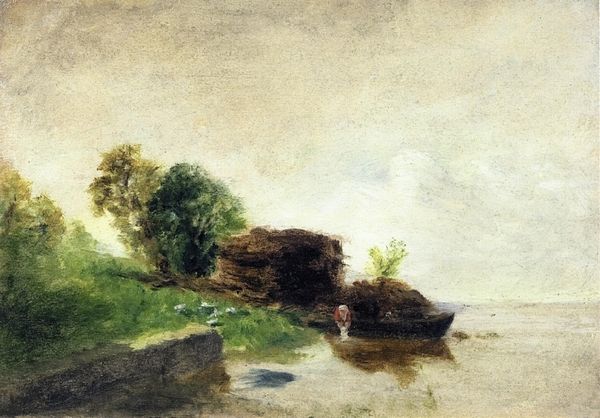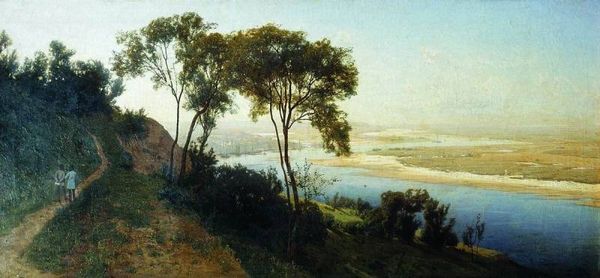
Copyright: Public domain
Editor: This is Mykola Murashko's "View on the Dnipro River" from 1890, rendered in oil paint. It's such a tranquil scene; the water and sky seem to melt together. What historical context should we keep in mind while appreciating it? Curator: Consider the rising tide of national identity in late 19th century Ukraine, then part of the Russian Empire. Murashko, along with other artists, played a crucial role in shaping a Ukrainian cultural identity. Editor: So the Dnipro River itself is symbolic? Curator: Absolutely. The Dnipro wasn't just a geographical feature; it was a powerful symbol of Ukrainian history, culture, and spirit, akin to the Mississippi in the U.S. Artists visualized a shared heritage through its depiction. How might this influence his choice of painting the landscape this way, emphasizing its quiet beauty rather than industrial importance? Editor: It gives it a timeless quality, almost divorced from the political struggles of the time. A visual embodiment of the "Ukrainian soul," maybe? Did the Imperial art institutions embrace this regional focus, or did they consider it subversive? Curator: That's a good question. While landscape painting was acceptable, emphasis on distinctly Ukrainian subjects and styles raised suspicion. Remember, cultural identity was a battlefield too, so depicting a particular river view had the ability to foster local awareness. This painting is about more than scenery. What did you initially find appealing? Editor: Its serene quality struck me, but knowing its place in cultural history adds so much depth. I’ll certainly look at landscape art differently now. Curator: Exactly. Art, even landscapes, can be powerful statements of identity and resistance. It reveals a rich tension between realism, romanticism and identity in this period.
Comments
No comments
Be the first to comment and join the conversation on the ultimate creative platform.
